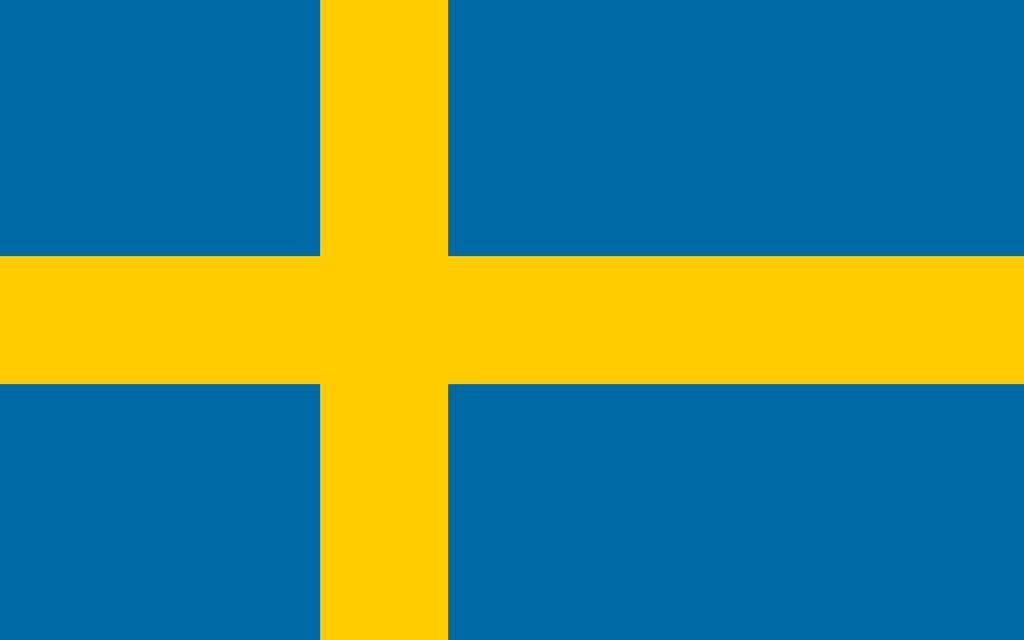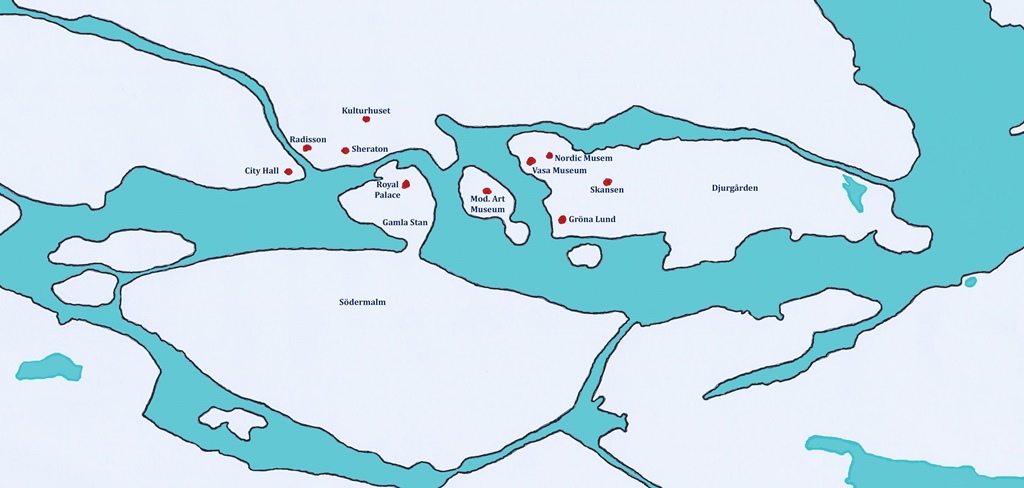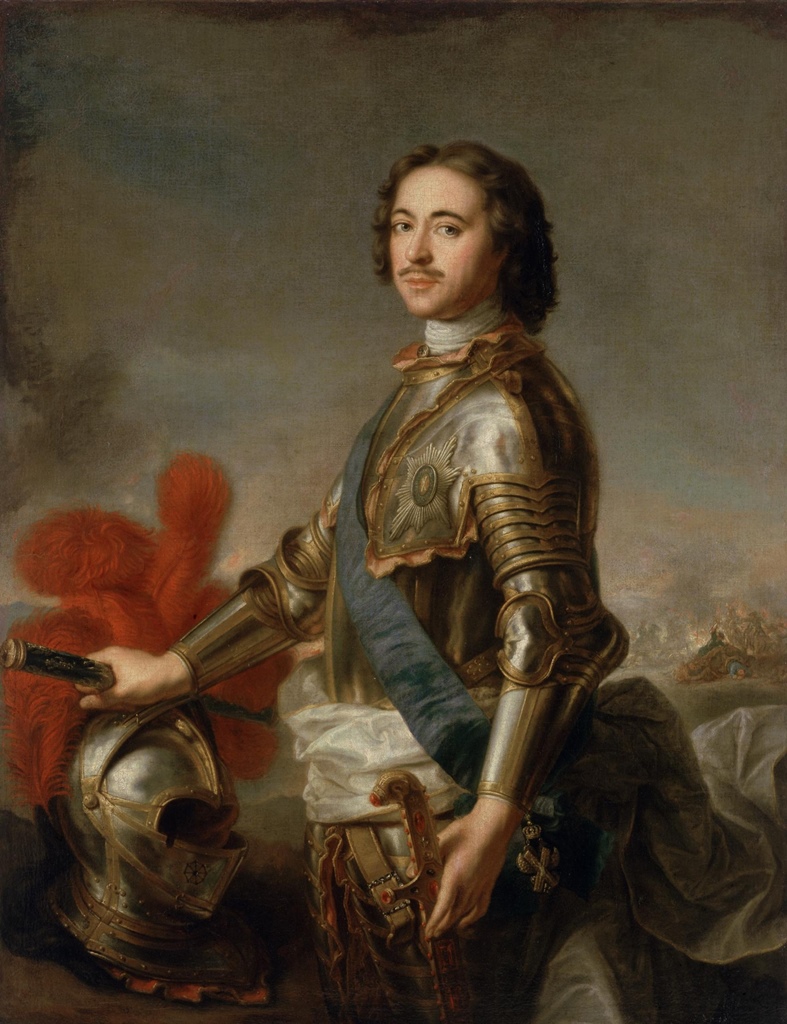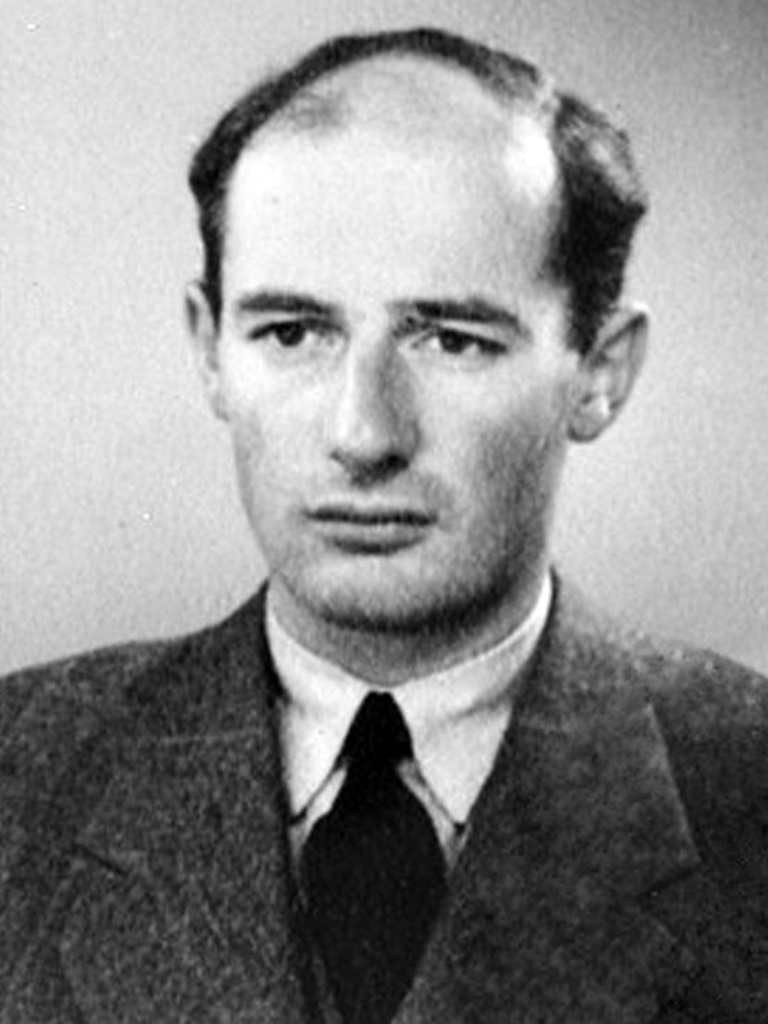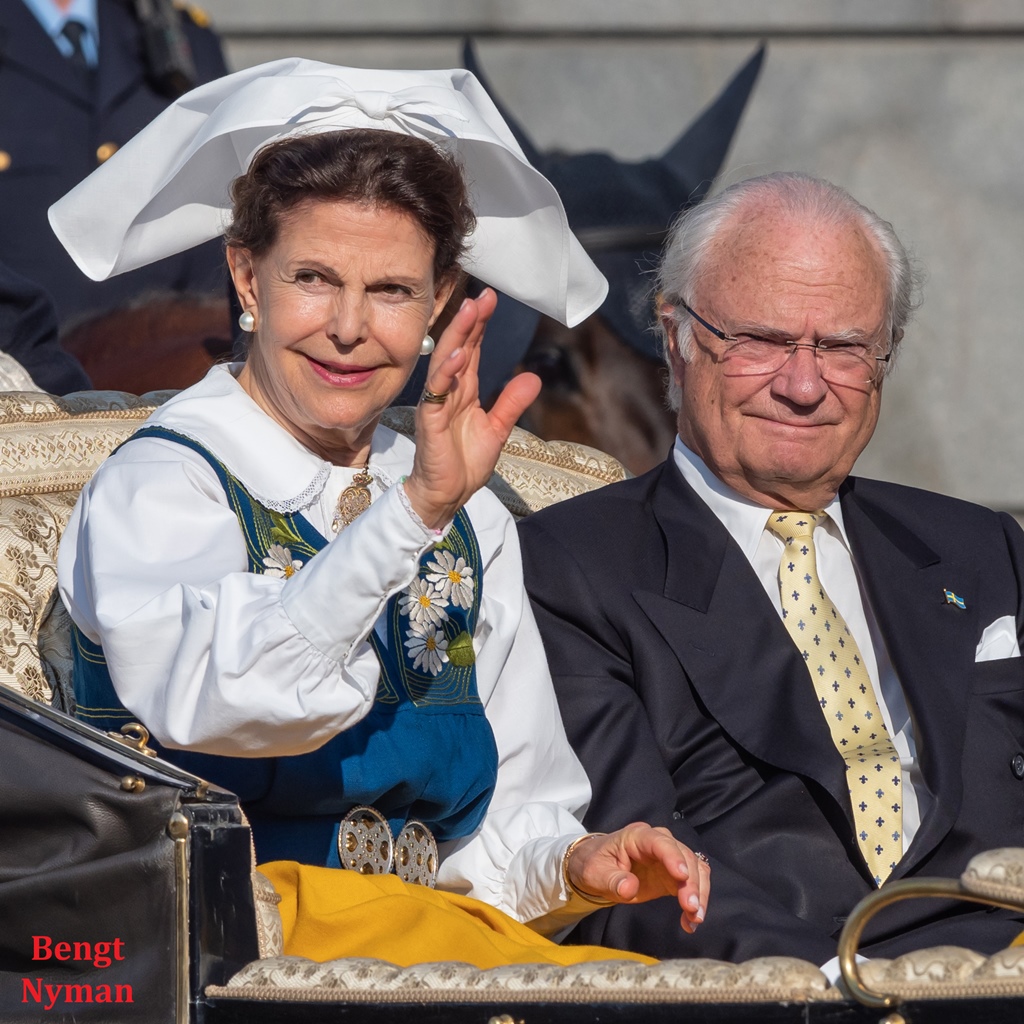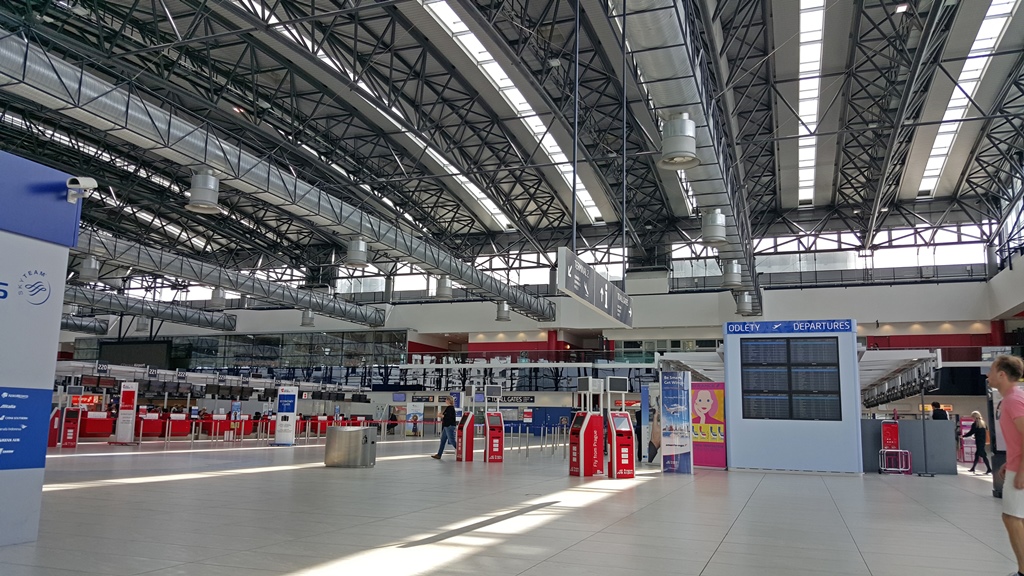Swedish Flag
Stockholm is the capital and largest city in the country of Sweden. Sweden is the largest
country in Scandinavia in population (more than 10 million), area (though Denmark is larger
if you throw in possessions Greenland and the Faroe Islands) and GDP (above $500 billion).
Despite its far northern latitude (approximately the same as Alaska’s), Sweden’s climate is
milder than one might think, especially in the south, where Stockholm is. In mid-summer, high
temperatures in Stockholm average in the 70’s (highs in the 90’s have even been recorded),
and lows average in the upper 50’s. Even in the depths of winter, average lows are in the
mid-20’s (though sub-zero temperatures have occurred), with highs in the low 30’s. But one
latitude effect that’s inescapable is the lack of daylight in the winter (days are only about
6 hours long in late December) and the lack of darkness in the summer (in late June it never
gets darker than twilight).
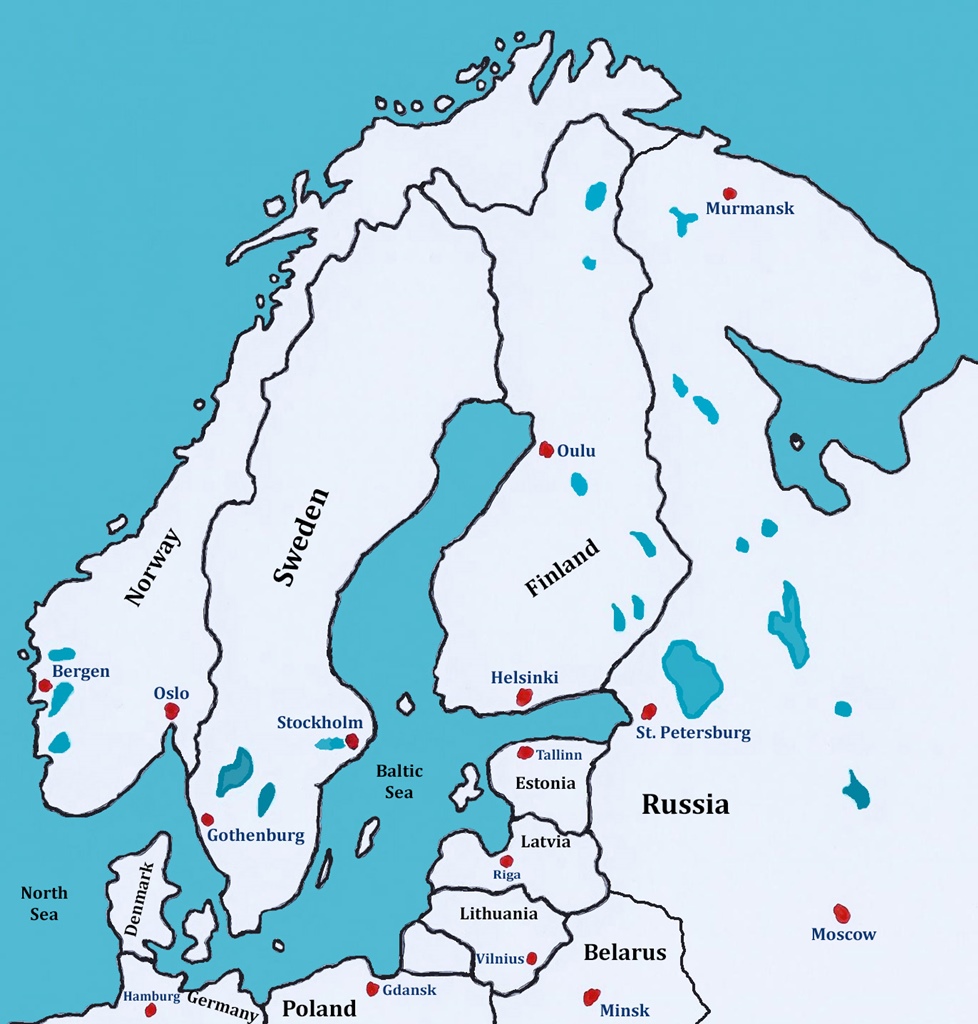
Sweden and Surroundings
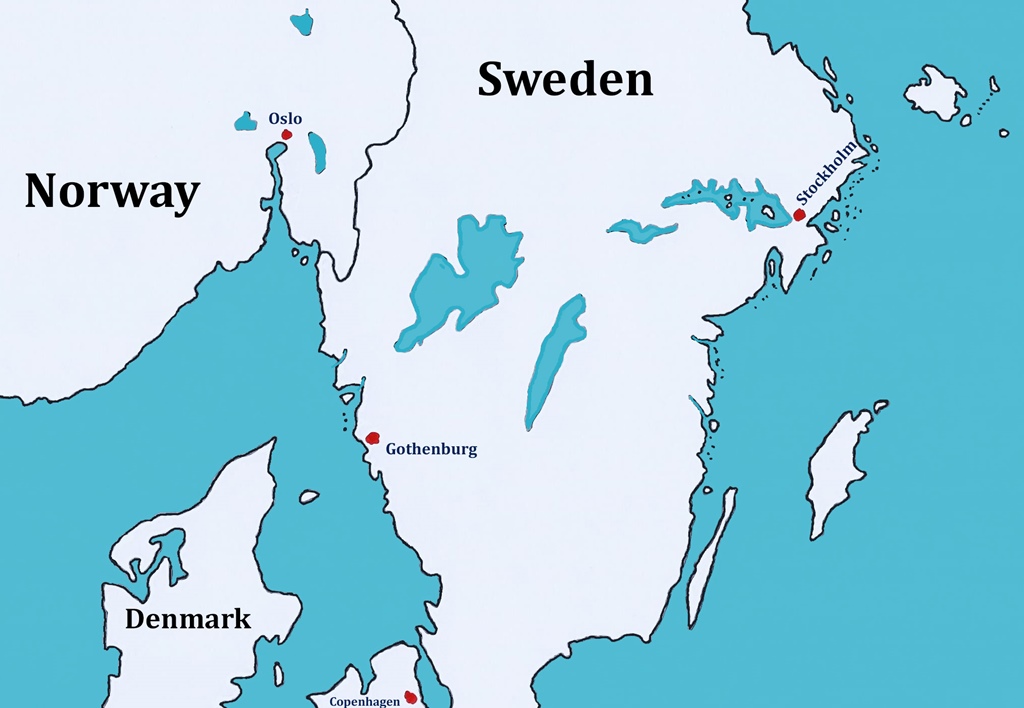
Southern Sweden
Stockholm is located at the point where Sweden’s third-largest lake, known as Lake Mälaren,
empties into the Baltic Sea. As recently as Viking times, this lake was not a lake at all,
but was a bay of the Baltic, and a town called Birka, on an island in the bay, was a major
port for trade. The reason for the change goes back 11,000 years. While Stockholm’s climate
is reasonably pleasant now, this was not the case 11,000 years ago, when the region was
covered by an ice sheet which was about 3 km thick. While it must have been incredibly cold
to freeze that much ice, that much ice would also have been incredibly heavy. So heavy, in
fact, that it significantly compressed the ground underneath it. As the climate warmed up
(undoubtedly from cavemen watching big TV’s and driving SUV’s), the weight of the ice sheet
was reduced, and something known as “post-glacial rebound” began. For 2,000 years, the
ground rose at a rate of about 7.5 cm/year, after which the rebound continued, but at a
slowing rate. Today, the ice sheet is long gone, but the ground continues to rise, at a
rate under 1 cm/year, and Lake Mälaren is about 3 feet above sea level, on average. The
rebound has also had effects offshore, with the appearance of several islands and islets.
“Several” as in “lots and lots” – the islands are collectively known as the Stockholm
archipelago, and there are something like 24,000 of them.
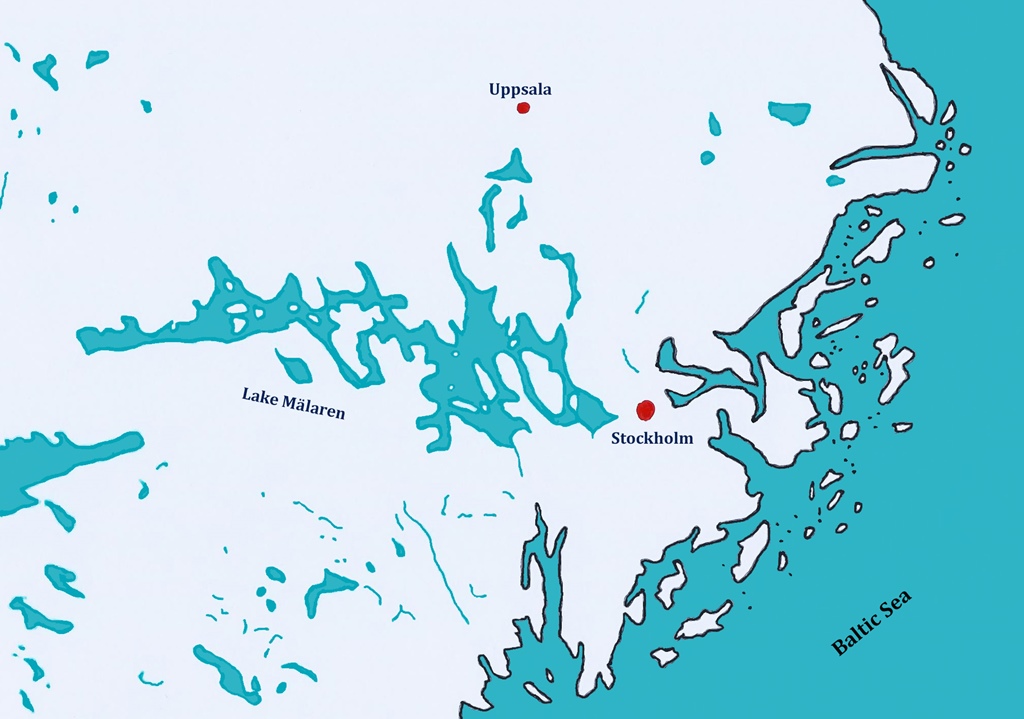
Stockholm and Surroundings
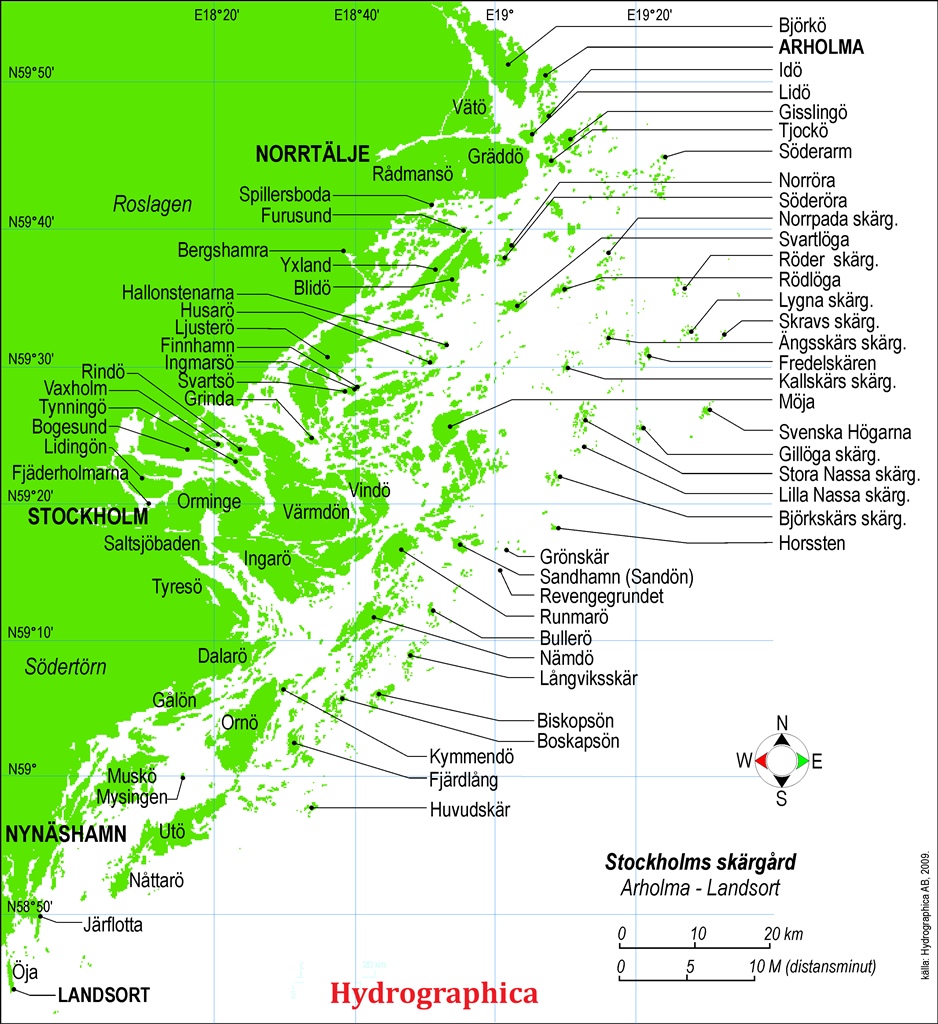
Stockholm Archipelago
14 of these islands are within Stockholm’s city limits, to go along with some mainland
territory. The city is thought to have been founded on one of these islands in 1187 A.D.,
to protect the town of Sigtuna (another town on Lake Mälaren, which had largely replaced
Birka as the main trading port) from invasion by sea. As navigation to Lake Mälaren became
more difficult, Stockholm inherited the role of principal trade port.
Central Stockholm
In 1397, Sweden entered with Denmark and Norway into an alliance known as the Kalmar Union to
counter the influence of a group of Germanic states, known as the Hanseatic League, which was
seeking to expand into Scandinavia. The member countries of the Kalmar Union were recognized
as separate countries, but they agreed to share a monarch, who would be Danish. This arrangement
worked, more or less, as far as fending off the Hanseatic League was concerned, but Sweden was
generally unhappy with this loss of its sovereignty, and there were interruptions in the alliance
throughout the 15th Century. In 1520, after some incidents of unrest, the newly-crowned
Christian II invited the nobles who had been involved in these incidents to a celebration in
Stockholm, in which all would be forgiven. The celebration took place, but did not end as
expected, as the well-fed nobles were arrested and executed, in an episode known as the Stockholm
Bloodbath. This led a man named Gustav Vasa, whose father had been one of the victims, to
organize a revolt which would successfully break Sweden away from the Kalmar Union for good.
Gustav was crowned King Gustav I, and is considered to be the father of modern Sweden.
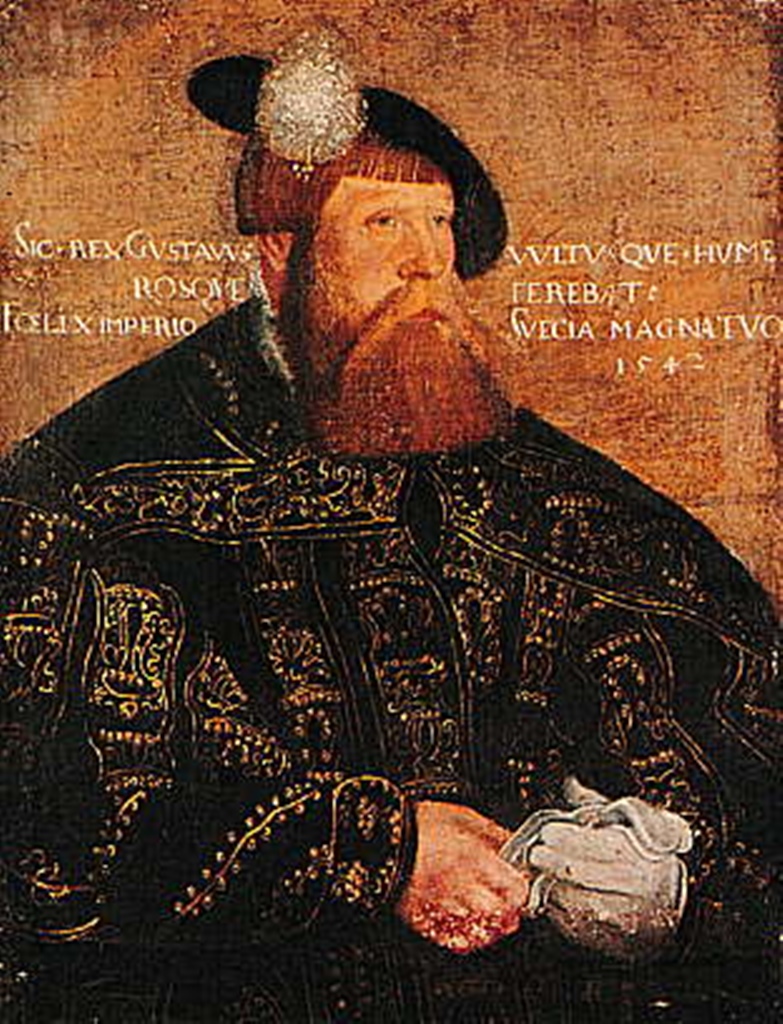
Gustav Vasa
In the 17th Century, King Gustavus Adolphus, also known as Gustav II Adolf, turned Sweden
into a major military power, proving to be one of the greatest military commanders of his
time. He acquired a significant amount of territory during the Thirty Years’ War, and was
looking to acquire more, when he was killed in battle in 1632. He has been celebrated as
the main defender of the Protestant cause during the Thirty Years’ War, as well as the
creator of the Swedish Empire.
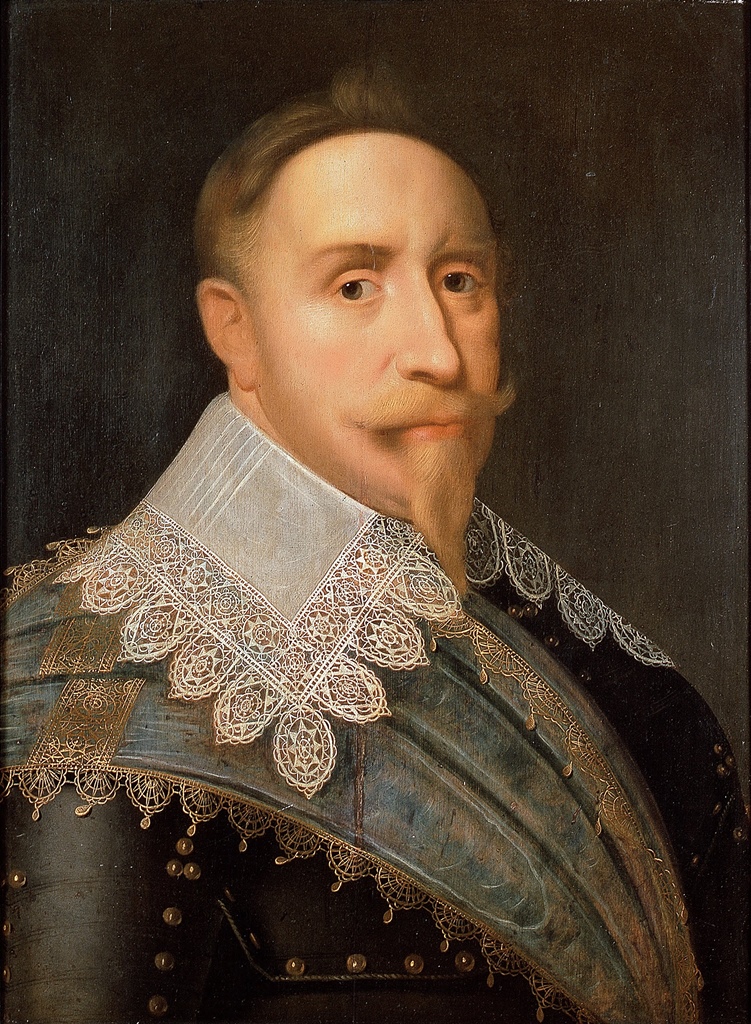
Gustavus Adolphus
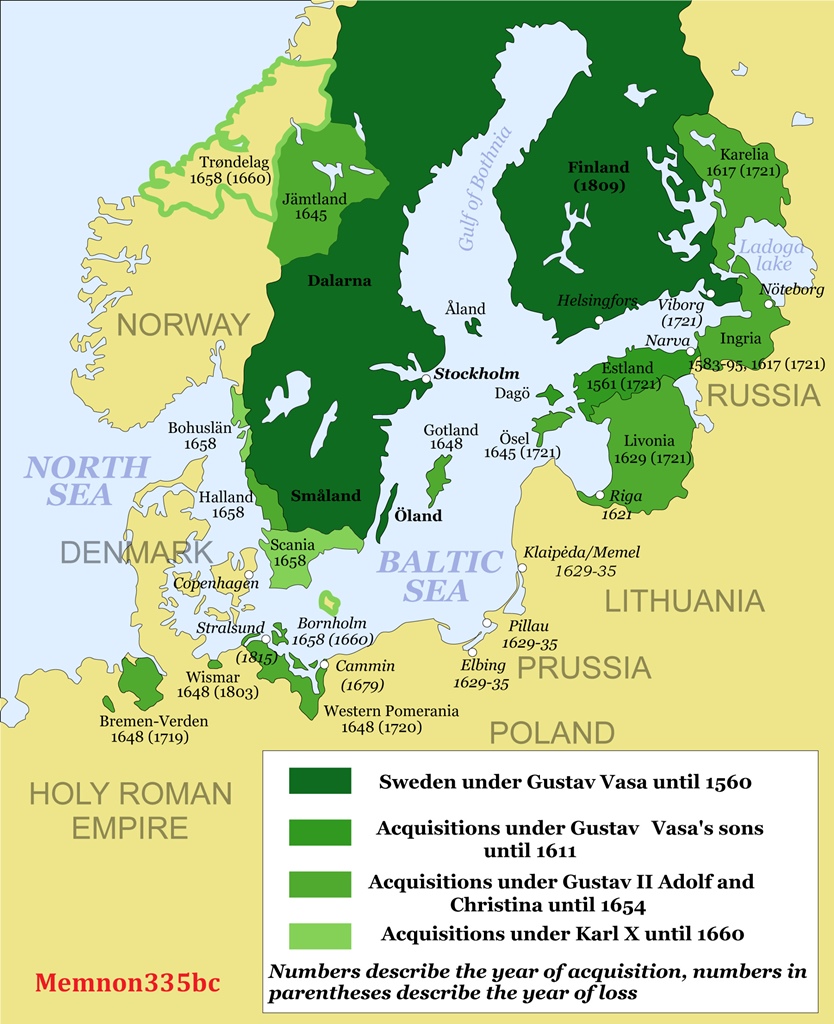
Swedish Empire
The Swedish Empire lasted until the early 18th Century, at which time they became involved
in the Great Northern War, in which Russia, under Peter the Great, successfully supplanted
Sweden as the dominant power in the Baltic region after 21 years of bitter fighting.
Peter the Great
Over the rest of the 18th Century, Sweden lost most of its non-Scandinavian territory in bits and pieces, and
finally lost modern-day Finland to Russia in 1809, in the relatively brief Finnish War. But
in an effort to regain some of its lost territory, Sweden allied itself with France in the
Napoleonic Wars. This obviously didn’t work out as well as they might have hoped, but
Sweden was able to annex Norway after a brief campaign in 1814. This would be the last
military campaign Sweden would be involved in, at least up to the present day. One other
outcome of the French alliance involved the Swedish monarchy. By 1810, it had become clear
that the Swedish king, Charles XIII, was aging rapidly and would not be able to produce an
heir. The Swedish government was called upon to determine a successor, and they surprised many by
going outside Sweden to get one, appointing one of Napoleon’s generals, Jean Bernadotte, to be
the new crown prince. Bernadotte was immediately placed in charge of Sweden’s military
forces, and soon also took charge of the country as regent. Bernadotte elected to not try
reacquiring Finland from Russia, as it would only lead to further conflicts, but he did lead the
campaign that ended in the acquisition of Norway. In 1818, the old king died and Bernadotte
changed his name to Charles XIV John (actually Karl XIV Johan), the first monarch of the
Bernadotte dynasty.
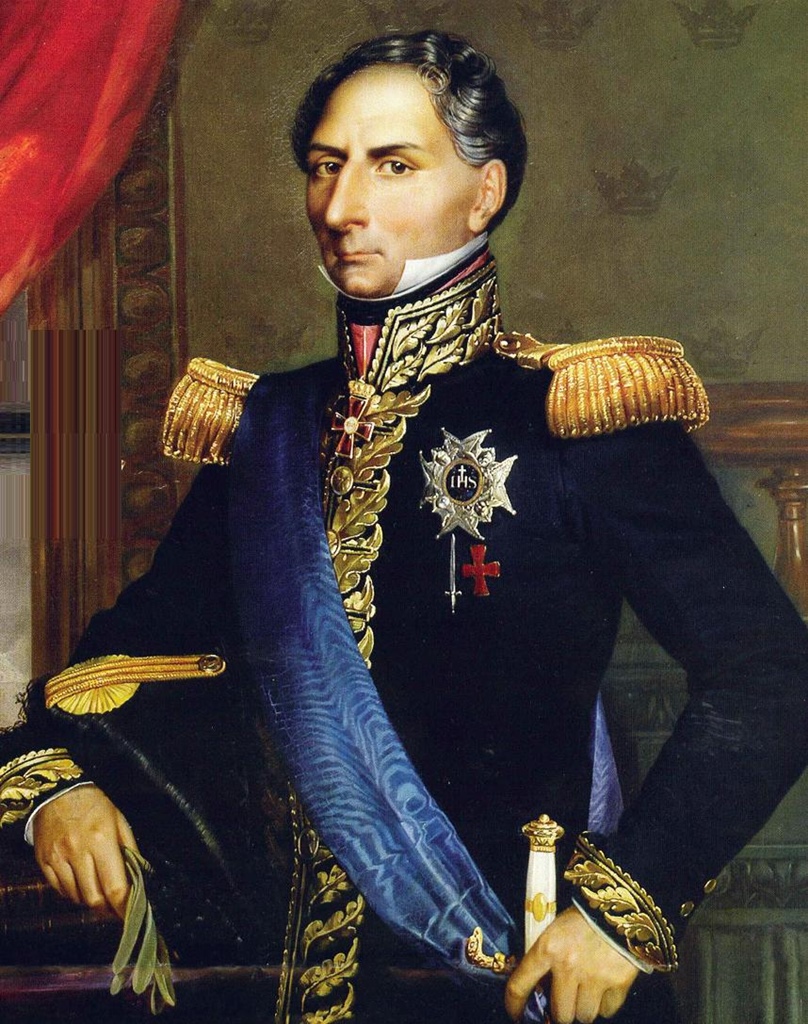
Jean Bernadotte
The rest of the 19th Century passed rather peacefully for Sweden. The country was late to the
Industrial Revolution, being content to pass through most of the century as a not-very-wealthy agrarian state.
Emigration was common during this time, with more than a million Swedes leaving for the United
States, largely settling in the Midwest. Sweden did start to awaken to modern industry late in
the century, with one of its major industrialists being Alfred Nobel. Nobel is famous for
having invented dynamite, but he also held 354 other patents. He owned a company called Bofors,
which he redirected from iron and steel production to the manufacture of cannon and other
armaments. As he got older, it occurred to him that he’d be remembered by many as a death merchant
unless he did something radically philanthropic, so he bequeathed the bulk of his fortune to the
creation and funding of the Nobel Prizes, which started going out to deserving recipients in
1901, after his death in 1896.
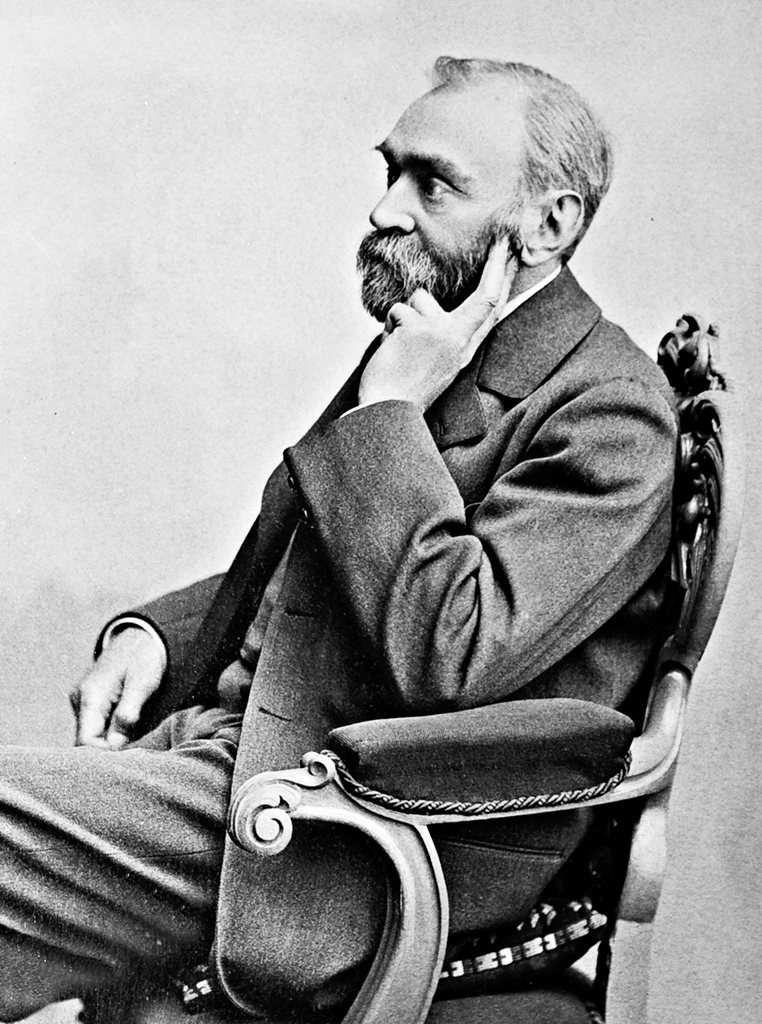
Alfred Nobel
In 1905, Sweden agreed to a peaceful dissolution of the union between Sweden and Norway,
and Norway became an independent monarchy (a Danish prince agreed to become Norway’s king).
Things did not remain peaceful for long, however, as World War I broke out in 1914. Sweden and
Norway both remained officially neutral, though Sweden supplied a certain amount of aid to
Germany. In World War II, Sweden again remained neutral, but Norway became occupied by
the Germans. Sweden didn’t want to be occupied, so they supplied a certain amount of
materiel to Germany throughout the war. But at the same time Sweden quietly supported Norwegian
resistance to their occupiers, and by 1943 was accepting Jewish refugees from Denmark and
from Hungary. The Swedish diplomat Raoul Wallenberg is famous for having rescued thousands
of Hungarian Jews from deportation to concentration camps.
Raoul Wallenberg
After the war, Sweden expanded its industry to supply much of the rebuilding of Europe,
receiving aid under the Marshall Plan. The country did not join either NATO or the Warsaw
Pact, though its economic (and to some extent military) alliances have primarily been with
the west. Sweden joined the European Union in 1995, but has retained its own currency (the
Swedish krona is worth about 11 cents in U.S. money as this is being written).
Despite a high level of government services (and taxes), Sweden remains an essentially
capitalist country, supplying electronics, Volvos and IKEA furniture to a hungry world.
They also remain a constitutional monarchy, with the current king being Carl XVI Gustaf,
the latest monarch of the House of Bernadotte. The eldest daughter of Carl Gustaf and his
consort, Queen Silvia, and the heir apparent, is Crown Princess Victoria.
Carl XVI Gustaf and Queen Silvia
To get to Stockholm, we boarded an SAS flight from Prague’s Václav Havel Airport, and in
less than two hours we arrived at Stockholm’s Arlanda Airport.
Ticketing Area, Václav Havel Airport
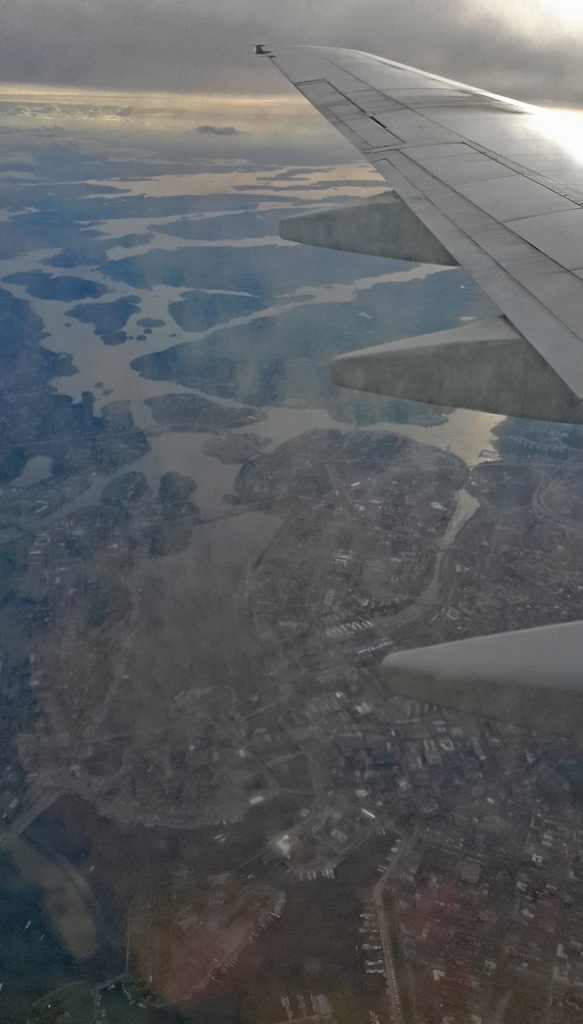
Approaching Stockholm
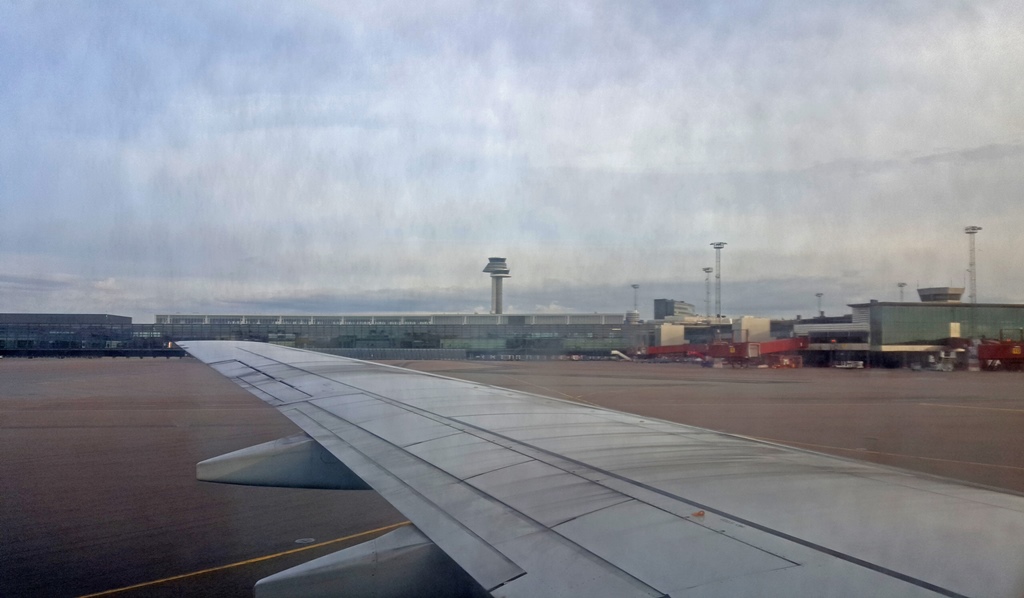
Stockholm Arlanda Airport
Arlanda Airport is 23 miles north of central Stockholm, and to make this journey we took a train
called the Arlanda Express, which got us to the central station in 20 minutes. Our hotel, the
Radisson Blu Waterfront, was adjacent to the station.
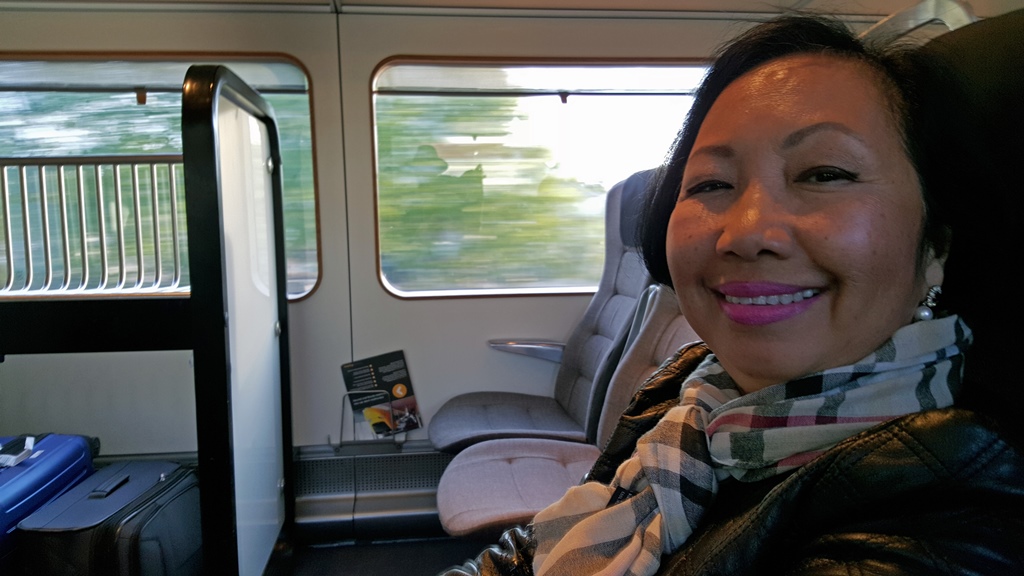
Nella on the Arlanda Express
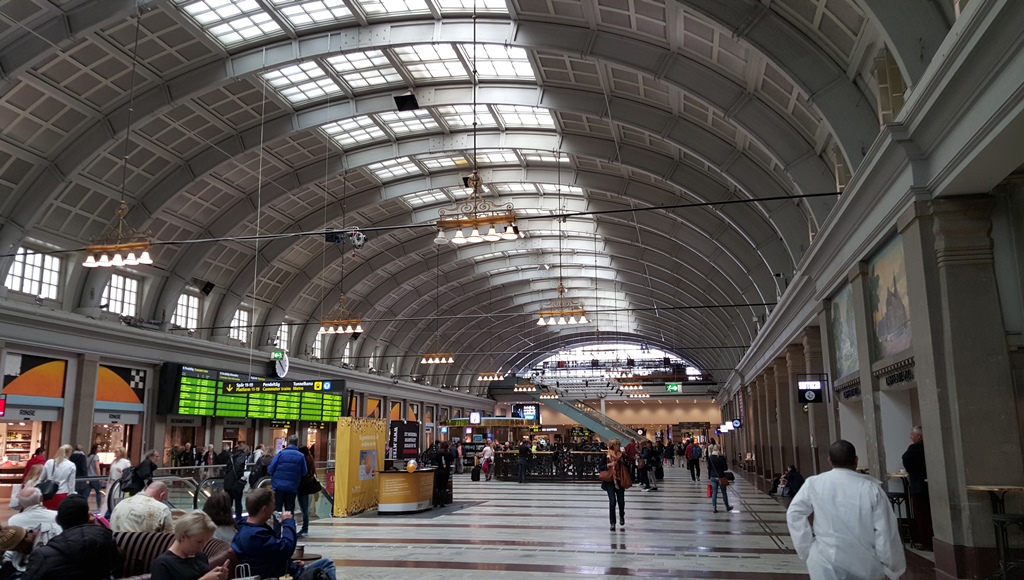
Stockholm Central Station
We checked into the hotel and found some dinner at the station. Though the time was around
9 PM, it wasn’t close to being dark out. Nevertheless, it had been a long day, and we headed
back to the hotel. We had plans for the next day, starting with a visit to Sweden’s Royal Palace.

